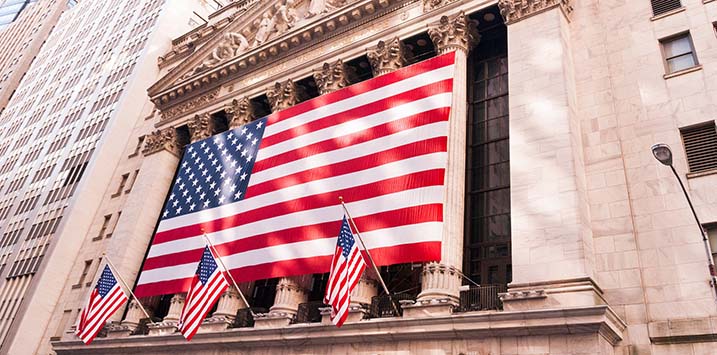
How Goldman Sachs sees the outlook for the U.S. economy
In a recent blog, we outlined the views of Goldman Sachs strategists on the Australian economic outlook, and the implications for investors. In this blog, we turn to the U.S. Given Goldman Sachs’s close relationship with the U.S. Federal Reserve, their views are certainly worth reading – particularly in relation to the likely direction of interest rates.
The key question is: can the U.S. bring inflation down without a recession?
According to Goldman Sachs, the Fed needs to avoid a perennial overheating labour market and get wage growth down to 3.5 per cent. To do that they need to shrink the job openings gap by reducing labour demand. (The job openings gap is the gap between jobs available and the number of unemployed. Currently the numbers of jobs available is almost twice the number of unemployed.)
Goldman Sachs thinks the U.S. needs a sustained period of lower growth to bring down labour demand. They also believe a soft landing is possible and therefore do not believe a recession is inevitable.
Is fiscal and monetary tightening working?
U.S. GDP has declined from 5.7 per cent in 2021 to just 0.5 per cent in 2022, suggesting fiscal and monetary tightening is working. In 2023, Goldman Sachs forecasts 0.5 per cent GDP, which is above consensus expectations of a recession. Lower growth is required to suppress labour demand and according to Goldman Sachs (or is that the Fed talking?) it is all going well so far.
The jobs/workers gap is coming down, and while there is a long way to go, the speed towards rebalancing so far has been quick. Fortunately, so far, all the decline in labour demand has been from a reduction of job openings, rather than a rise in unemployment.
Much as we are seeing in Australia, U.S. wage growth remains too high, and remains close to the peak, while inflation has come down. Goldman Sachs thinks wage growth will fall to four per cent in 2023, which is close to the 3.5 per cent target it needs to get to.
Where will the decline in inflation come from?
Goldman Sachs expects the decline in inflation to come from core goods inflation, like auto, which was a major driver of inflation last year. However, Goldman Sachs expects services inflation to remain high because labour-intensive services inflation will take longer to solve.
Shelter inflation, which is a leading indicator, has come down sharply recently. This is a big deal because a decline in goods inflation with a moderate decline in services will be acceptable to the Fed.
Consequently, Goldman Sachs sees the Fed slowing the pace of tightening. They expect the Fed to raise rates by 50 basis points this week, and then by 25 basis points in the February, March and May meetings, which would see rates reach 5.00-5.25 per cent.
Goldman Sachs notes more underlying resilience in demand despite higher rates and believes the peak fiscal and monetary policy drag has happened in 2022. The Fed will now try to keep inflation under control by keeping the economy on a low growth path. Importantly, Goldman Sachs doesn’t think the Fed will cut rates as soon as they bring inflation down. Estimates of neutral rates are inherently rubbery, so it is more likely monetary policy and rates will be left at higher levels unless the economy deteriorates too much. Nevertheless, Goldman Sachs sees rates cuts in 2024 and 2025 if the direction of the economy reverses too much.
A full-blown recession solves the inflation problem pretty quickly and so, in that case, the Fed would cut rates substantially. That view is reinforced by a divided government in the U.S., meaning the Fed will not receive much fiscal help from fiscal policy.
Separately, an earlier or fuller China reopening means more demand and that probably puts upward pressure on goods prices, making the Fed’s job tougher on battling inflation. A China reopening will see more disruptions in supply as people become infected while increased mobility will drive demand for energy and oil.
For the U.S. housing outlook, Goldman Sachs expects a further slowdown in housing activity. They note we have already seen some, but probably not as much as they would have expected. The last few years saw shortages of cars and homes, so when rates rise, the impact on homes in areas of tight supply will not be as evident.
Goldman Sachs has seen lower housing activity and lower prices and expect peak-to-trough house price declines of 12 per cent in aggregate but as much a 20 per cent decline in some regions.
According to Goldman Sachs, and in contrast to the views of independent research houses like Cross Border Capital, the normalisation of the Fed’s balance sheet is not a very important driver or influence of liquidity and markets. Quantitative Tightening is a relatively weak tool, and the whole balance sheet run-off to date is equivalent to just a 30 basis points rate hike. Fed officials share the Goldman Sachs view. If the Fed was only hiking 50 basis points or so then Quantitative Tightening would be more meaningful.
With respect to the inverted yield curve, the market is pricing a cut because it expects the economy will be weak and also rates will need to be lower longer-term. A difficult question for Goldman Sachs to answer is how long will it take to bring inflation back down and weaken demand. Goldman Sachs is moderately optimistic, and thinks the U.S. will get back to roughly pre-pandemic labour conditions with slightly higher inflation in a few years. They expect most of the reduction in labour demand to come via a less harmful reduction in job openings. The yield curve therefore doesn’t add much to the debate.
Read the other two blogs in this series here:
How Goldman Sachs views the Australian economy